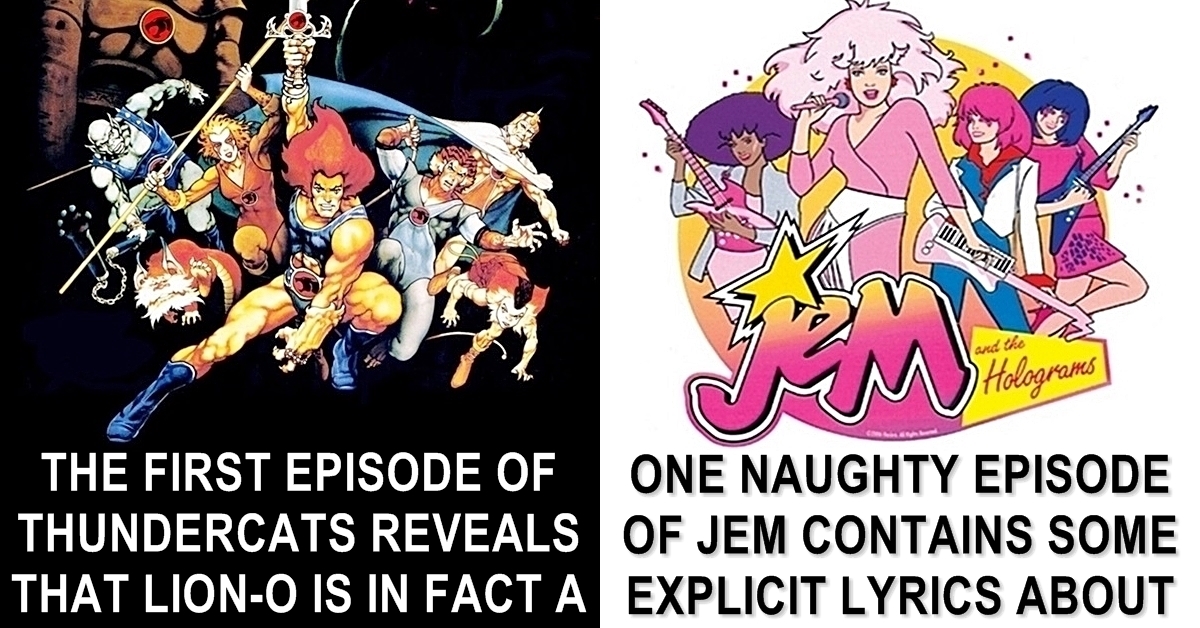Growing up in the the 1980s we were blessed with a massive amount of quality cartoons to watch, and we decided it was about time that we celebrated this by compiling 50 fantastic facts about 13 of our very favourites.
We hope you will enjoy reading them, and be sure to let us know which 80s cartoons you loved the most!
*
The Care Bears
1. They Started Out As Characters On Greeting Cards
The Care Bears were originally created by artist Elena Kucharik to be used on greeting cards, and it wasn’t until later that they were used for toys and brought to the TV.
Every Care Bear was a different colour and had a different symbol on their stomachs that represented their specific personality, known as their ‘tummy symbol’.
The names of the original 10 Care Bears were Bedtime Bear, Birthday Bear, Cheer Bear, Friend Bear, Funshine Bear, Good Luck Bear, Grumpy Bear, Love-a-lot Bear, Tenderheart Bear, and Wish Bear.
And as well as the Care Bears themselves, there were also the ‘Care Bear Cousins’, which were other animals such as a Lion, Monkey, Cat, Dog, Pig and an Elephant.
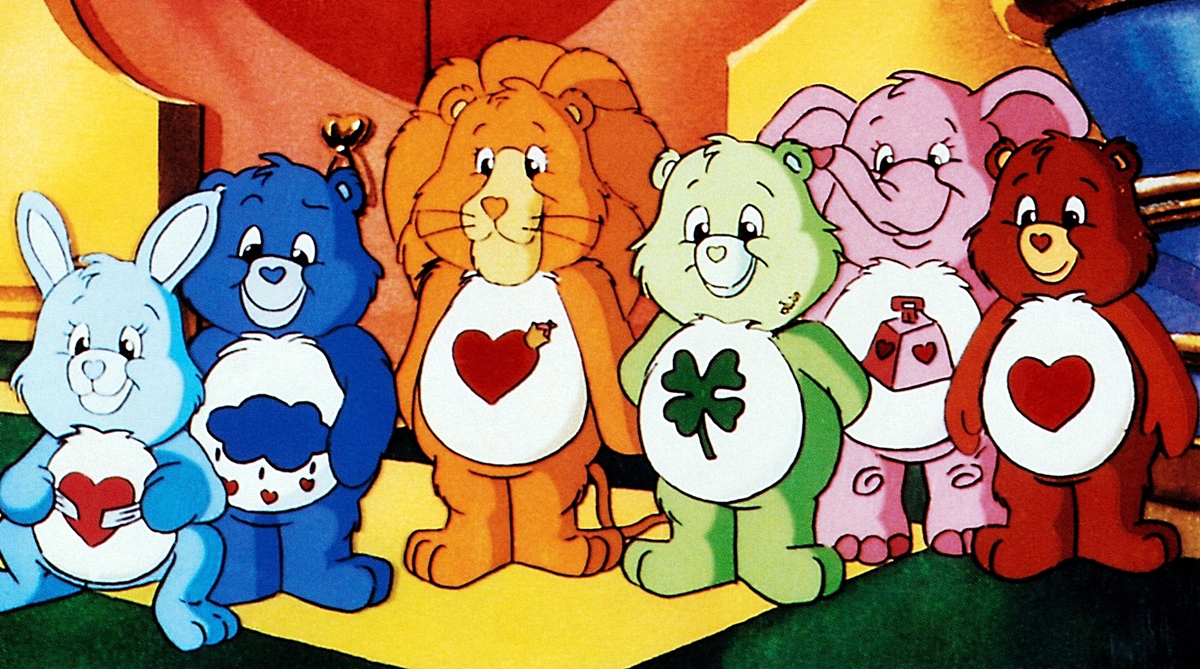
*
2. The Care Bears Movie Was One Of The First Films To Be Based On Toys
The Care Bears existed as toys before they ever made it to the big screen, and The Care Bears Movie was one of the first times that the toys came before the film.
As well as ‘The Care Bears Movie’ in 1985, there was also ‘Care Bears Movie II: A New Generation’ in 1985, and ‘The Care Bears Adventure in Wonderland’ in 1987.
The Care Bears also appeared in TV Movies called ‘The Care Bears in the Land Without Feelings’ and ‘The Care Bears Battle the Freeze Machine’.
3. They Taught People How To Care
The Care Bears live in a place called the ‘Kingdom of Caring’, which contained ‘Care-a-lot’, where the Care Bears themselves lived, as well as the ‘Forest of Feelings’.
*
The stories they took part in also focused on caring and helping, showing us as young children how to be aware of the feelings of others around us.
The Care Bears had a ‘Care Bear Stare’, which was where they would all stand together and project light from each of their individual symbols, bringing love and happiness into even the hardest of hearts.
But they weren’t always child friendly, because shockingly, ‘The Care Bears Movie 2’ has a storyline where a young girl sells her soul to a shape shifting demon named Dark Heart so she can get better at sports!

4. There Was More Merchandise Than You Probably Remember
Of course one of the main reasons the Care Bears were so popular were the lovely toy bears we could add to the cuddly collection of animals on our bed.
*
But, aside from the cuddly toys, we could also get our hands on, among other things, Care Bears books, sweets, stationery, stickers and clothes.
Some of the toys are now worth alot of money, for example a ‘Care Bear Cousins Proud Heart Cat’ 13 inch toy sold for a whopping £255 on eBay in August 2017!
In addition, a number of Care Bears music albums were released, including ‘Introducing the Care Bears’, ‘The Care Bears Care For You’, ‘Adventures in Care-a-lot, ‘The Care Bears’ Birthday Party’, ‘The Care Bears’ Christmas’ and ‘Friends Make Everything Better’.
https://www.youtube.com/watch?v=TtueijOApR8
Dogtanian And The Three Muskehounds
5. It Introduced Us To Classic Literature
Dogtanian and the Three Muskehounds was a Spanish and Japanese animated adaptation of the classic Alexandre Dumas story of ‘d’Artagnan and The Three Musketeers’.
*
Over 2 series of 26 Episodes each, the story, set in the 17th century, followed a young Dogtanian travelling to Paris in order to become one of King Louis XIII of France’s musketeers.
There he befriended 3 other musketeers called Porthos, Athos and Aramis, and saved Juliette, a maid in waiting for Queen Anne of Austria.
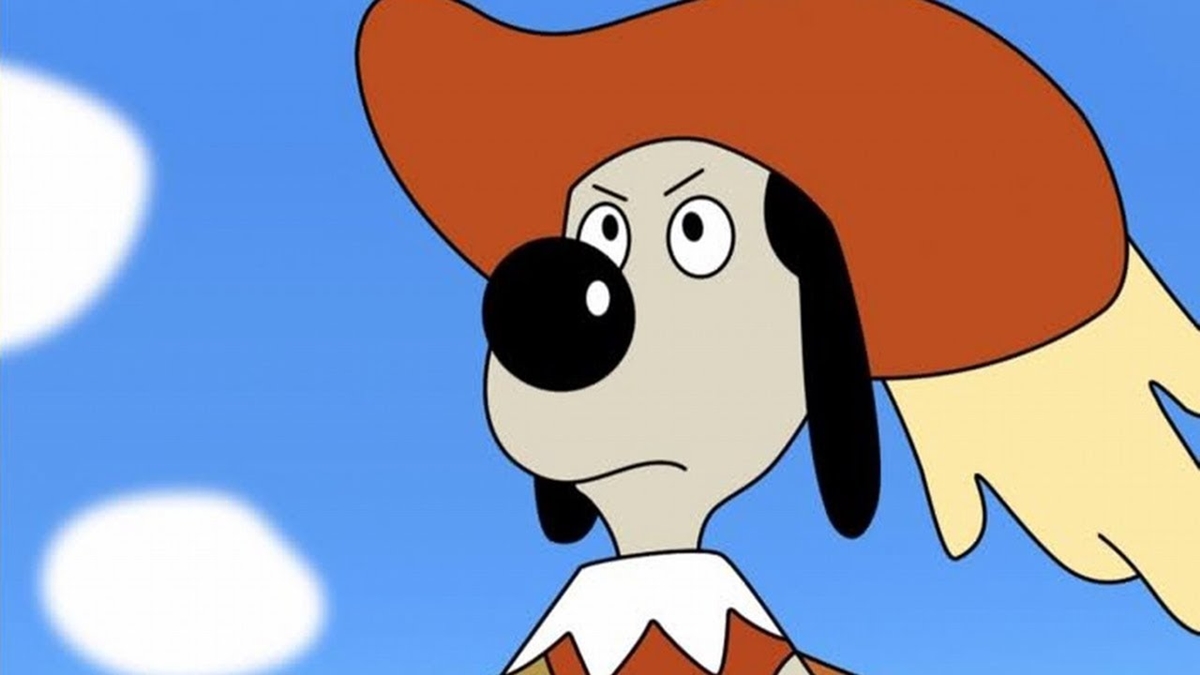
6. They Are Never Referred To As ‘Muskehounds’
*
Would we be right in assuming that you referred to ‘d’Artagnan’ as ‘Dogtanian’ until you were at least 30 years old?
Although did you know that the ‘Muskehounds’ of the title are actually referred to as ‘Musketeers’ throughout the whole show.
7. It Had A Sequel
In 1990, 26 Episodes of ‘The Return of Dogtanian’ were released, picking up 10 years after the original story.
In it, Dogtanian and Juliette are now married and living together on the outskirts of Paris with their two children, Philippe and Fleur.

8. It Led To Another Amazing Show
Dogtanian and the Three Muskehounds was created by the joint production of ‘BRB Internacional’ of Spain and the Japanese studio ‘Nippon Animation’.
This partnership worked so well that they collaborated in another successful animated series two years later called ‘Around the World with Willy Fog’, which was another show with a legendary theme tune…
*
Dungeons & Dragons
9. There Weren’t That Many Episodes
Dungeons & Dragons was an American animated television series based on the Dungeons & Dragons role-playing game, which ran from 1983 to 1985 for three series and a total of twenty seven episodes.

The eight protagonists were Hank The Ranger, Eric The Cavalier, Diana The Acrobat, Presto The Magician, Sheila The Thief, Bobby The Barbarian, Uni The Unicorn and Dungeon Master.
*
The group came across many different enemies, but their primary antagonist was Venger, a powerful wizard who wished to rule the realm and believed the power from the children’s weapons would help him to do so.
10. It Didn’t Have A Proper Ending, But A Conclusion Was Planned
On occasions the children would make it back home, but something would mean they could not stay, such as Eric being transformed into a bog beast, Venger going with them, or having to leave Uni behind.
And unfortunately the show was cancelled before the makers were able to finish it properly, so the kids never did manage to escape properly!
A final un-produced episode called ‘Requiem’ would have provided a conclusion as well as a re-imagining in case the show was picked up for a fourth series.
Throughout the show, a connection was suggested between Dungeon Master and Venger, and the un-produced episode would have confirmed that was indeed the case.
This would have redeemed Venger and ended on a cliffhanger where the six children could decide to either return home or stay and deal with evil that still existed in the Realm.
Unfortunately the show was cancelled before the episode was made, although the script can be found online and was performed as an audio drama for a DVD edition of the series…
*
11. The Toys Were Fairly Rare
There were two sets of toy figures produced featuring the principal cast of the cartoon; one nine figure set produced in Spain and one eight figure set produced in Portugal.
A number of tie-in books were also released, including ‘Pick a Path to Adventure’, which were six books that followed the popular ‘Choose Your Own Adventure’ format.

*
12. Its Level Of Violence Was Controversial
The level of violence in the show was controversial at the time, and the script for the episode ‘The Dragon’s Graveyard’ was almost scrapped because the characters contemplated killing their nemesis, Venger.
There was also the episode ‘City at the Edge of Midnight’, which involved small children being dragged through a portal located under their beds by a sinister force and made to work in some kind of demonic factory.
The ‘National Coalition on Television Violence’ in the US demanded that a warning be shown before each episode stating that Dungeons & Dragons had been linked to real-life violent deaths.
He-Man And The Masters Of The Universe
13. The Toys Came First
He-Man And The Masters Of The Universe wouldn’t have existed without the ‘Masters of the Universe’ toyline, which was originally created by Mattel in 1981, two years before it would come to our TV screens.
*
Additional waves of action figures, creatures, vehicles and play-sets were released every year until 1987, totalling 70 distinct figures in all.
A number of the original series toys now sell for a lot of money on auction sites such as eBay, with examples including an original 1982 Skeletor figure selling for a whopping £385.94, and a 1985 He-Man figure selling for £288.22!
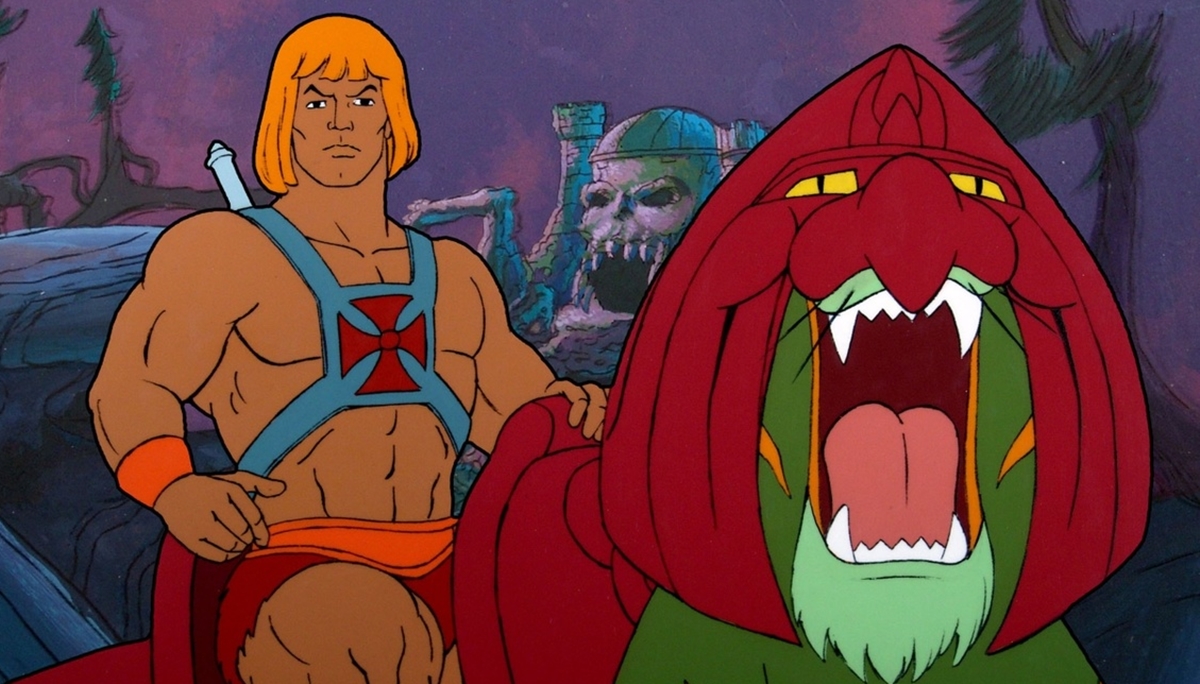
14. The Show Always Ended With Some Good Advice
Every episode ended with one of the cast members providing information about a particular topic.
Classic examples came in the episode ‘Double Edged Sword’, where He-Man admits to the audience that they are watching a television adventure series, and ‘Island of Fear’, which involved Adam and Teela explaining to the audience that progress occasionally means pulling down trees in order to put up buildings.
*
The character Orko appeared in 44 of these end of show segments, with 39 appearances for Teela, 34 for He-Man, and 25 for Man-At-Arms.
15. He Was Influenced By Conan The Barbarian
Toy makers Mattel originally wanted to create toys based on the Conan the Barbarian film starring Arnold Schwarzenegger.
However, when they discovered that the film would have an adult rating they instead came up with He-Man, who’s physique was influenced by the Austrian bodybuilder.

*
16. He-Man’s Son Nearly Had His Own Show
In 1996 an idea was pitched to have a show called ‘He-Ro: Son of He-Man and the Masters of the Universe’, which would have featured He-Man’s son Dare inheriting the Power Sword.
But a brand new He-Man episode called ‘The Curse of the Three Terror’ was released as recently as Summer 2016.
Jem
17. It Was Hasbro’s Way Of Trying To Appeal To Girls
After finding success with GI Joe and Transformers, Jem was an attempt by Hasbro to use an animated series to conquer the ‘pink’ aisle at the toy store the same way they had the ‘action figure’ aisle.
Jem’s popularity led to competition between Hasbro’s Jem product line and ‘Barbie and the Rockers’, a similar product line by Mattel.
It’s long been said that Barbie and the Rockers were created because Mattel was threatened by Jem’s success and felt they needed to deliver a similar toy, right down to the ethnicities of the band members.
*
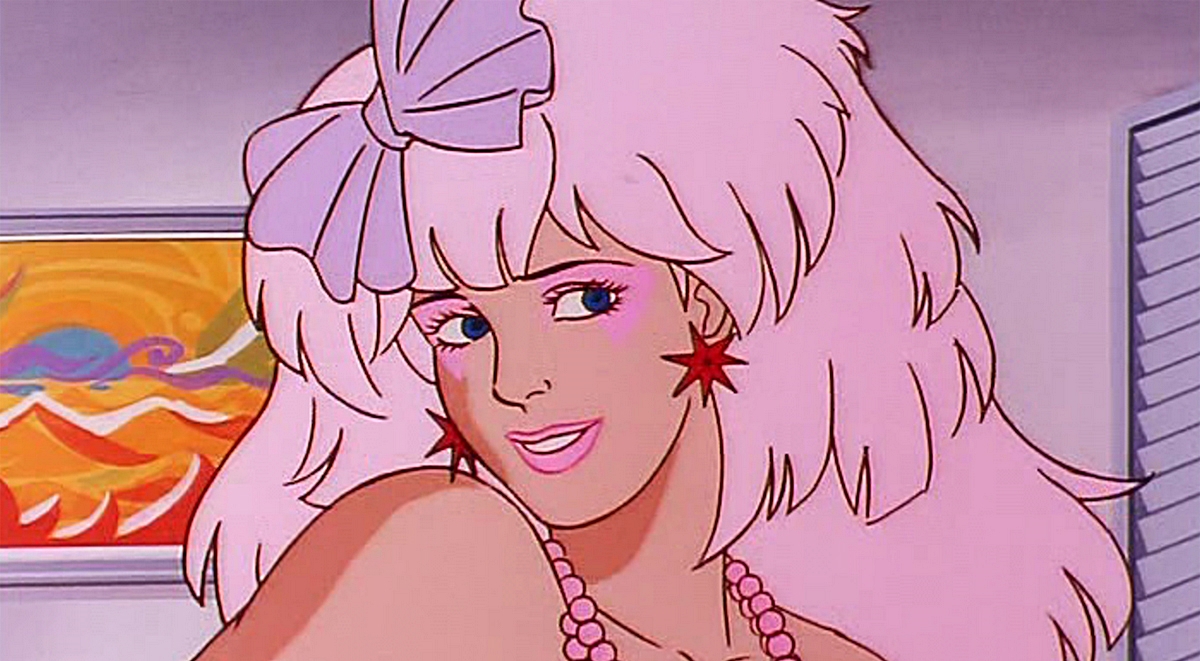
18. The Songs Had Some Big Talent Behind Them
The Misfits’ Sheila ‘Jetta’ Burns was voiced by Louise Dorsey, Engelbert Humperdinck’s daughter.
Phoebe ‘Rapture’ Ashe and Ingrid ‘Minx’ Kruger of the Stingers got their singing voices courtesy of Vicki Sue Robinson, perhaps better known for her 1976 song ‘Turn the Beat Around.’
Song lyrics were usually credited to ‘Kimber’ and ‘Stormer’, but they were actually written by a veteran theatre and TV songwriter Barry Harman.
*
Jem was actress Britta Phillips’ first professional job, and she did so well in the audition singing the theme tune that the producers actually used this version in the completed show.
19. The Show Dealt With Social Issues
Jem touched on issues such as drug abuse and teenage runaways.
Incredibly, after watching one particular episode (where a phone hotline for runaways was revealed), two young kids that had run away from home were reunited with their families.

20. Jem Sang About Sex
*
In the episode ‘Starbright, Part One: Falling Star’, Jem sings explicit lyrics about her man Rio and wondering “Who is he kissing? Is it me, or is he making love to a fantasy?” Very naughty.
M.A.S.K.
21. They Were Up Against G.I. Joe And Transformers
M.A.S.K. was developed by Kenner (an American toy manufacturer) in 1985, along with an animated television series (which lasted for a total of 75 episodes) to help with toy merchandising.
It was devised to be a direct competitor to (and a combination of) Hasbro’s successful G.I. Joe and Transformers toy lines, hence the reason it featured both a paramilitary organisation and transforming vehicles.
M.A.S.K. stood for ‘Mobile Armoured Strike Kommand’, and the organisation they came up against, V.E.N.O.M. stood for ‘Vicious Evil Network of Mayhem’.
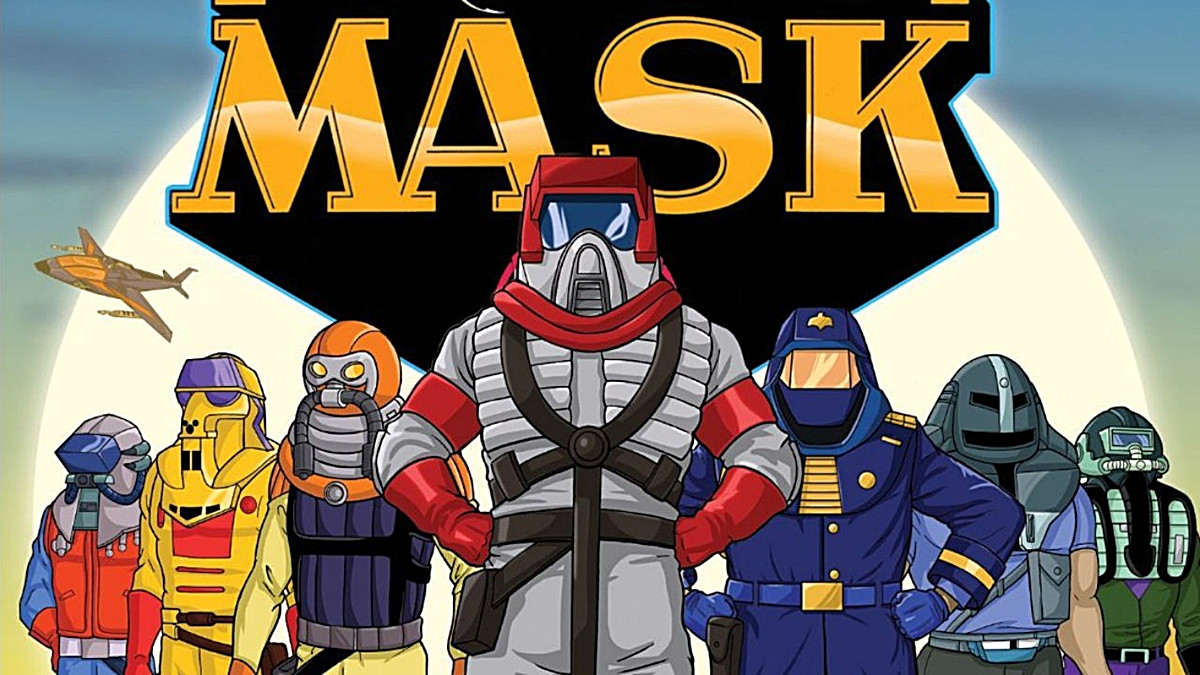
*
22. A Comic Revealed The Origin Of M.A.S.K.
The first wave of M.A.S.K toys came packed with one of 3 mini comics which were produced to give back story to the characters
One of these mini comics revealed the origin of M.A.S.K. which was never shown on the TV show.
It showed that Matt Trakker and his younger brother designed the M.A.S.K. technology before being betrayed by Miles Mayhem, who killed Trakker’s brother in the process.
23. There Are Some Strange Knock-Off Toys
Some strange toy combinations have appeared in other countries, such as the ‘Adventure Pack’, which has a Brad Turner figure painted like Matt Trakker’s Jungle Adventure figure, but with his Hocus-Pocus mask that came with Condor.
However, if you’ve kept your genuine M.A.S.K. toys and are willing to sell your prized collection then you could make a decent return, particularly with the ‘Split Seconds’ line of vehicles that are much rarer than the original series, with some being sold for hundreds of pounds on eBay.
*

24. A Film Is On Its Way
Paramount have made a deal with director F. Gary Gray to team up with Hasbro and develop a M.A.S.K. live action film.
The film will be produced by Hasbro alongside Gray, in which they are looking for a writer to ‘hatch a contemporary subculture movie with a youth empowerment angle’. Whatever that means.
*
My Little Pony
25. They Were Inspired By A Real Life Pony
My Little Pony creator Bonnie Zacherle and her family lived in Japan, where her father cared for all the quarantined animals entering and leaving the country.
Bonnie fell in love with a chubby little Korean pony called Knicker, but sadly when they left Japan they couldn’t take Knicker with them.
The bright ponies we came to know and love were not what Bonnie initially had in mind, as she originally envisioned toys that looked like real animals and would be played with by both girls and boys.

26. It Debuted On TV In 1984
The first TV special, called simply ‘My Little Pony’, was first released in April 1984, although it was later renamed ‘Rescue at Midnight Castle’.
*
The second was called ‘Escape from Catrina’, and was shown in 1985.
The first full series, called ‘My Little Pony ‘n Friends’, was first shown in 1986 and lasted for two seasons.
Each half hour episode of the TV show featured one segment of Pony tales and one segment of ‘Friends’ (ie other Hasbro toys).
The Glo Friends featured Glo Worms, MoonDreamers featured a line of dolls of the same name, and Potato Head Kids was about Mr. Potato Head’s family.
27. There Were Only Six Original Ponies

*
The six original ponies were Snuzzle, Butterscotch, Blue Belle, Minty, Blossom, and Cotton Candy, and they were all produced in 1982.
However, makers Hasbro constantly expanded the types of ponies available, meaning that soon there were unicorns, sea ponies, pegasus ponies, flutter ponies, sparkle ponies, glow ‘n show ponies (which glowed in the dark), so soft ponies (which were fuzzy), scented ponies, secret surprise ponies, (which had a secret compartment containing a surprise), and Drink ‘n Wet baby ponies, (which came with nappys that revealed patterns when the toys wet themselves).
28. There Have Been A Number Of Revivals
The toy line was revived in 1997, but it proved to be unpopular and was discontinued two years later.
The ponies saw a more popular revival in 2003 with toys that more closely resembled the original toy line.
*
Approximately 100 million ponies were sold globally over the next 7 years, after which Hasbro launched a fourth incarnation of the franchise, starting with the animated series ‘My Little Pony: Friendship Is Magic’.
The brand brought in over $1 billion retail sales in 2014 and 2015.
The Mysterious Cities Of Gold
29. It Took Inspiration From A Novel
The Mysterious Cities of Gold was a mix of ancient South American history, archaeology, and science fiction.
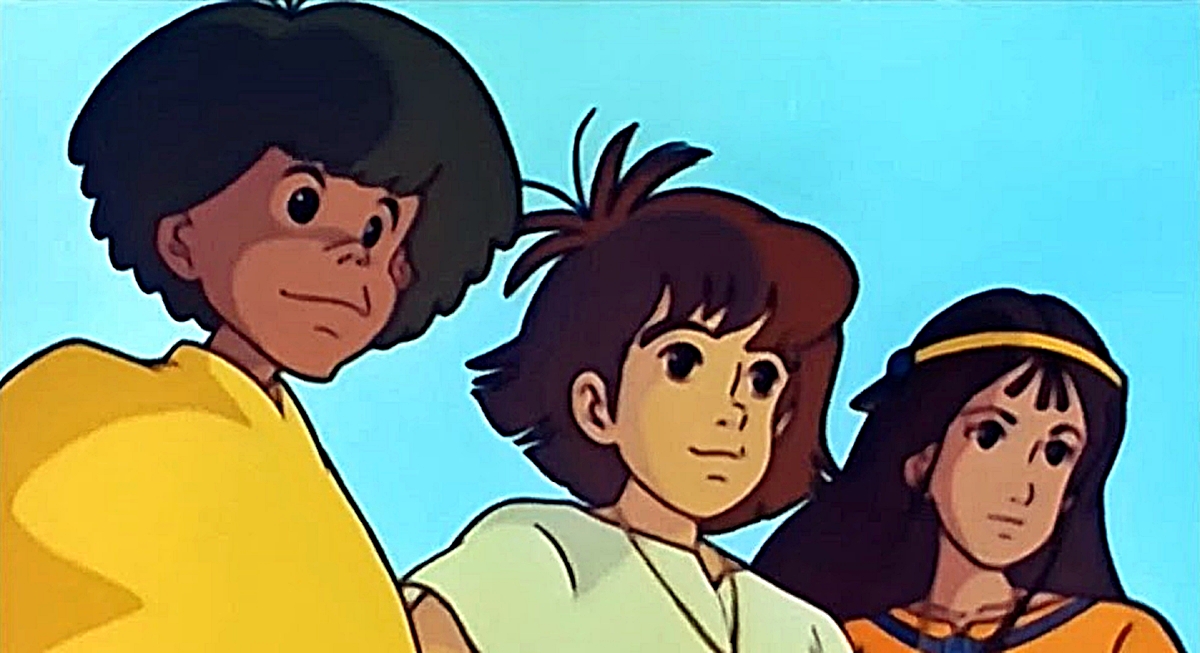
The travellers encountered the Maya, Inca, and Olmecs during their journey, discovering many lost technological wonders of the Mu Empire, including a solar powered ship called the Solaris, and The Golden Condor, a huge mechanical bird.
The story was written by Jean Chalopin and Bernard Deyriès, and is very loosely based on the novel ‘The King’s Fifth’ by Scott O’Dell.
*
The original Japanese title is ‘Taiyou no ko Esteban’, the English translation being ‘Esteban: The Child of the Sun’.
30. The Japanese Version Had A Different Opening Song
The Japanese version of the show had a very different opening song.
This song was originally going to be used for the Western version as well, but the creators changed their mind after hearing the music from Ulysses 31, and decided that the current song was too understated and that they needed something with a more adventurous feel.
What they came up with is possibly the greatest children’s TV theme tune of all time…
https://www.youtube.com/watch?v=XtyXnr5XV_A
31. Each Episode Had A Mini Documentary Attached
Every episode of the show also had a documentary associated with it.
These looked into some of the things that had taken place in the series and visited some of the locations the show was based on, including the Galapagos Islands and Machu Pichu.
*

32. There Is A Sequel
Three new series of 26 episodes each pick up on the storyline where the 1982 show left off.
The English version premiered on Kix (now Pop Max) in November 2013.
All 39 episodes of the original series were released in the UK in 2008 as a six DVD set with the picture and sound restored.
https://www.youtube.com/watch?v=bGbCXrEPgLU
*
She-Ra: Princess Of Power
33. She Could Have Had A Different Name
In the book ‘Creating the Filmation Generation’, it was claimed that the first suggestion for She-Ra’s name was ‘She-Ro’.
This would have reflected the original name of her brother, He-Man, which was ‘He-Ro’.
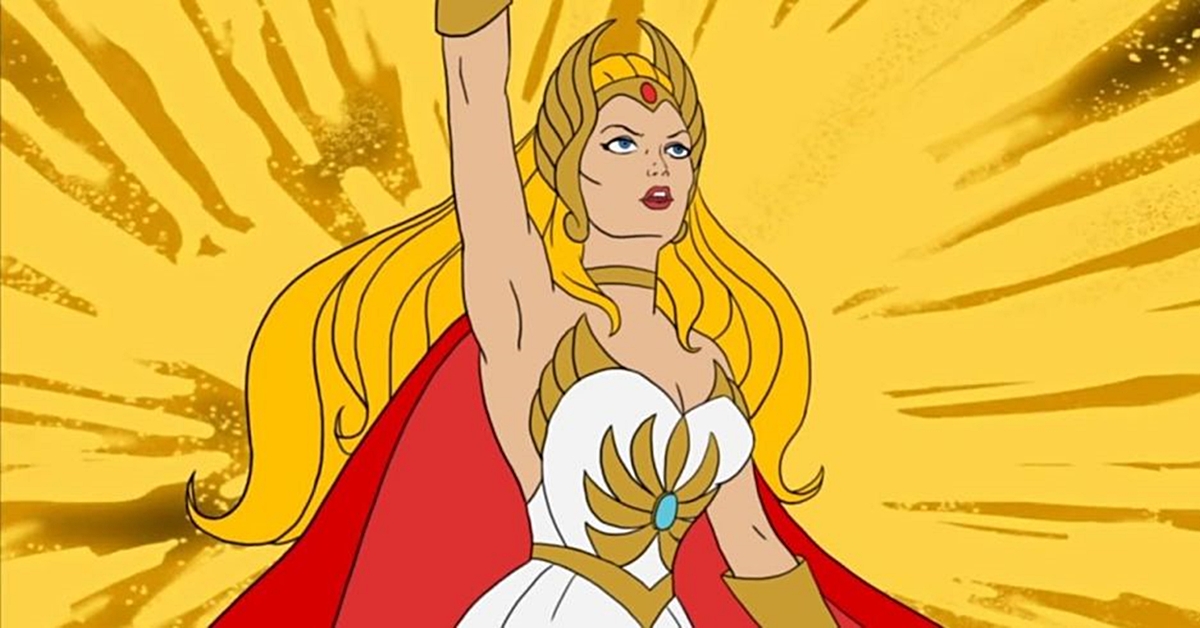
34. She Had An Animator Who Specialised In ‘Lustful Expressions’
For reaction shots where She-Ra needed to be overly expressive, producers used one female animator in particular.
According to show writer Bob Forward, this particular animator “threw lust into everything” with the director “using her for everything where he wanted passion”.
*
35. She Helped Barbie
She-Ra was officially described as a ‘fashion action doll’ by maker Mattel, leaving toy shops unsure whether to put her near Barbie or among the more male oriented action figures.
In the end some shops put her next to her twin brother He-Man, others put her next to dolls, and some had her in both departments.
Janice Varney-Hamlin of toy maker Mattel has said, “Barbie sales had flattened out at the time, so introducing a competitive fashion doll line that we owned expanded the size of the entire category, allowing the Barbie business to grow.”
It worked, as in 1986, after surviving an onslaught from rival Jem and the Holograms, Barbie made $350 million in sales.

36. She’s Coming Back
It has recently been confirmed that Dreamworks is bringing She-Ra back to life on Netflix in 2018.
*
The synopsis of the new show reads like this: ‘She-Ra And The Princesses Of Power is the story of an orphan named Adora, who leaves behind her former life in the evil Horde when she discovers a magic sword that transforms her into the mythical warrior princess She-Ra. Along the way, she finds a new family in the Rebellion as she unites a group of magical princesses in the ultimate fight against evil.’
It seems that the show will be called ‘She-Ra and the Princesses of Power’ rather than ‘She-Ra: Princess of Power’ as it was back in our childhood.
SuperTed
37. He Came From Humble Beginnings
SuperTed was created in 1978 by Mike Young.
Rather than being a money making venture, Mike made up the story to help his son overcome his fear of the dark, as SuperTed was originally also afraid of the dark until he got given his super powers.
*
Young went on to publish over 100 SuperTed books.

38. He Could Have Become American
Like Fireman Sam, SuperTed is born and bred in Wales.
In its original run in 1982 the show was in the Welsh language, and it was translated into English when it aired on BBC1 the following year.
In 1980 Warner Brothers offered Mike Young a quarter of a million pounds for the SuperTed film rights, but Mike refused, saying that he wanted to keep the series Welsh, creating local jobs.
Young also wanted to keep SuperTed child friendly and free from violence, his aim being to prove that ‘soft edge and quality animation can be more appealing to children than any amount of violence’.
To this end he created his own production studio and produced the series himself.
*
39. It Was Revamped
SuperTed was aired in over 50 countries. including Africa, Sweden and Australia, and it was the first show created in Britain to air on The Disney Channel in America.
In 1989 Hanna Barbera released ‘The Further Adventures of SuperTed’, in which they added a number of other villains including Polka Face, Bubbles the Clown and Sleepless Knight.

*
Teenage Mutant Ninja Turtles
40. They Started Out As A Joke
Teenage Mutant Ninja Turtles co-creator Kevin Eastman originally drew a sketch of a turtle in a mask and holding a weapon which he passed to his collaborator Peter Laird as a joke.
Little did they know at the time what they had started.
In addition to this, the Turtles started out as a parody of early 80s comics, especially Daredevil.
Daredevil fought a group of ninjas called ‘The Hand’, and the Turtles fought ‘The Foot’.
Daredevil was trained by ‘The Stick’, so the Turtles were trained by ‘Splinter’, get it?
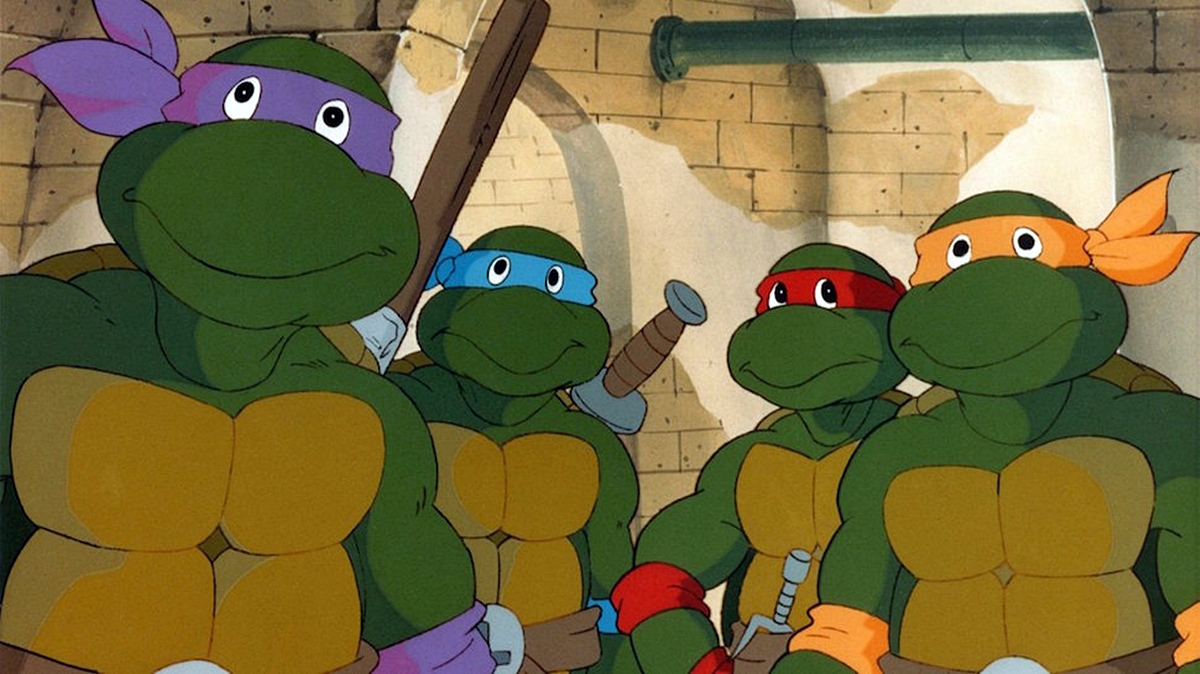
41. April O’Neil Was Originally A Black Woman, And Wasn’t A Reporter
April was originally drawn as a black woman, although this was not always clear in the original black and white comics.
*
She was changed to a white woman from the 80s cartoon onwards.
In addition to this, she was originally a scientist working at laboratory who the Turtles saved when she was attacked by some robot mice.
42. Shredder Was Inspired By A Cheese Grater
Co-creator Kevin Eastman grabbed a cheese grater and messed around with it on his arm, giving him the inspiration for a bad guy covered in cheese graters.
Because of this, Shredder was almost called ‘Grater’ or ‘Grater Man’.

*
ThunderCats
43. They Started Out In Their Birthday Suits
Until they were given ‘protective clothing’ by their mentor, the ThunderCats were completely nude, causing much childhood confusion alongside perhaps a tiny bit of excitement.
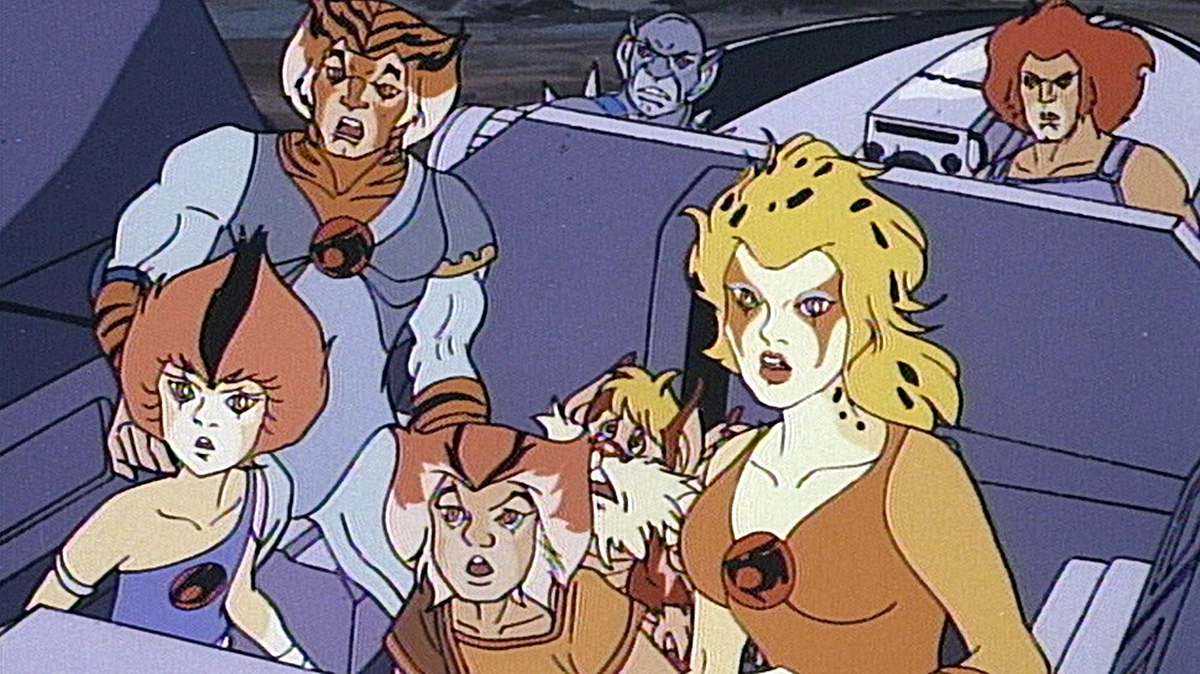
44. Lion-O Is Actually A Child
In the beginning of the series, the ThunderCats head into space to flee the destruction of their home planet Thundera.
Lion-O wakes up to find out his suspended animation pod has malfunctioned, meaning that although his body has aged into a man, his mind is still that of a child.
*
45. Mumm-Ra Is An Ancient Egyptian
Although the show never actually states this, look at the facts; He sleeps in a sarcophagus, is clothed in mummy bandages, and resides in the ruins of the Black Pyramid.
He also had a dog, which was called Ma-Mutt.

46. Everyone On The Planet Sounds Strangely Similar
If you’ve ever thought that many of the supporting characters sounded familiar then you’d be right.
*
The show may have featured a large cast of characters, but the entire first season of ThunderCats had just 6 voice actors.
The Transformers
47. They May Not Have Existed Without He-Man
Toy makers Hasbro were keen to rival the massive success of Mattel’s ‘Masters of the Universe’ toyline, so were desperate to create toys that would engage kids in the same way that He-Man and his friends we doing.
They looked to Japanese toy maker Takara, whose transforming ‘Diaclone’ and ‘Microman’ robot toys would inspire them to create similar characters and storylines, but aimed at American children.
They released the original Transformers toy line in 1984 alongside the legendary cartoon.

48. Marvel Comics Came Up With The Name Optimus Prime
Hasbro needed help coming up with names for the leaders of the Autobots and the Decepticons, so they called Marvel Comics for help.
*
Marvel’s editor Jim Shooter and writer Bob Budiansky came to their rescue, with O’Neil coming up with the name Optimus Prime, and Budiansky Megatron.
49. Transformers Were Killed Simply To Sell More Toys

By the time ‘The Transformers: The Movie’ was released in between the second and third series of the cartoon, the creators realised that to sell more toys they would have to kill off existing characters.
*
The film kills over a dozen characters from the cartoon series, including Starscream, and of course Optimus Prime.
However, young Transformers fans were severely traumatised by the death of their beloved Optimus Prime, causing many parents to send letters to Hasbro, which convinced them that Optimus should be resurrected for the TV series.
50. The Film Was Orson Welles’ Last Ever Role
Hollywood legend Orson Welles played the part of Unicron, and it was his last role before he tragically died of a heart attack in October 1985.
It was also the final performance from legendary actor and musician Scatman Crothers, who played the Autobot Jazz.
That’s all for now! If you have enjoyed reading this post, please do spread some lovely, nostalgic, animated memories to your friends and family by sharing it with them!
*

